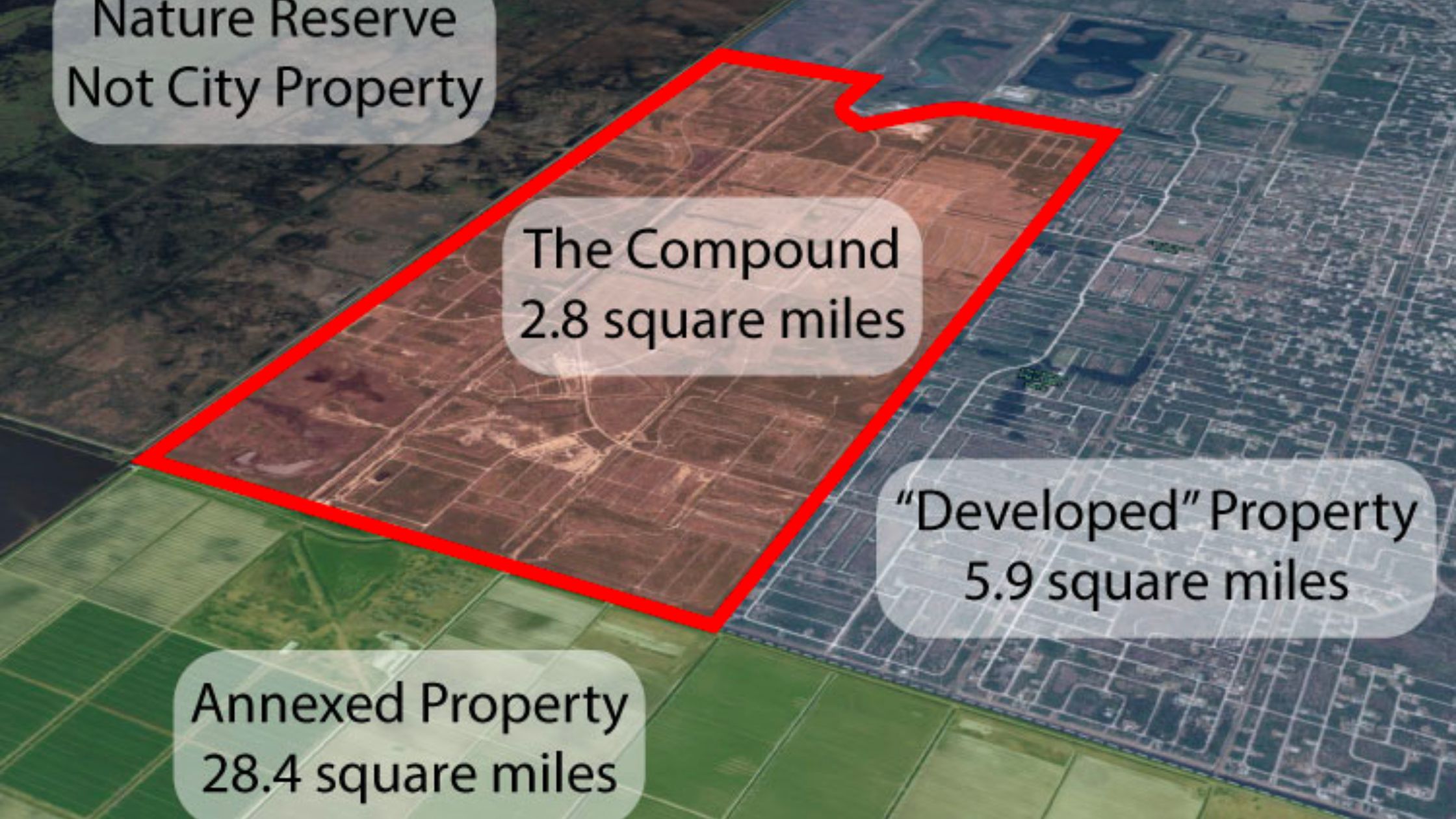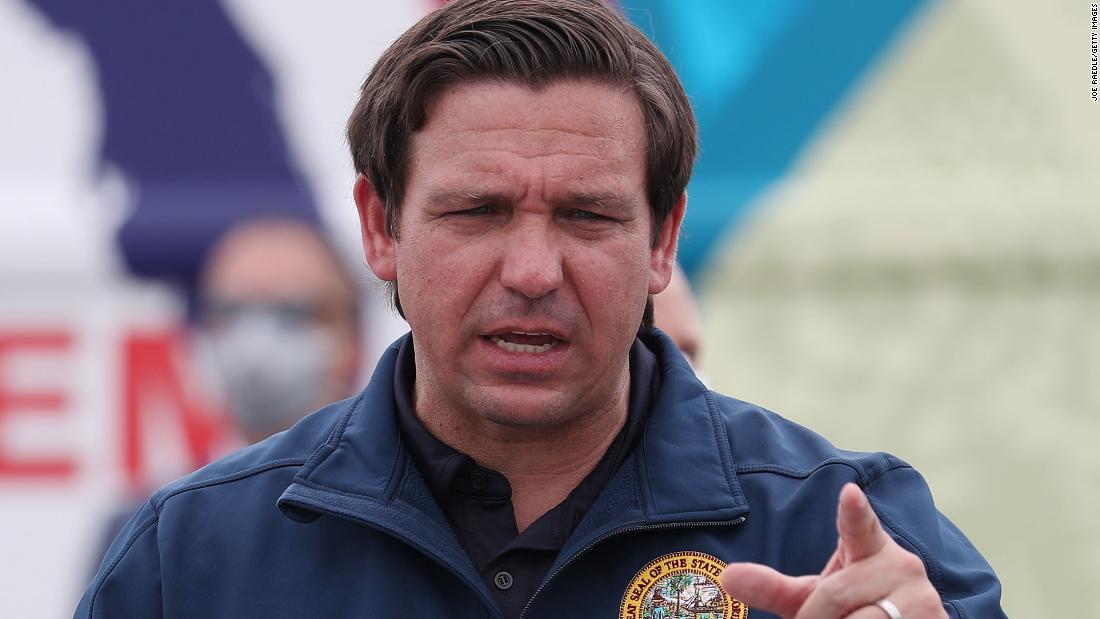When the first recruiting class of Gov. Ron DeSantis’ new Florida State Guard showed up for training last month, they had varied experiences and expectations.
Over 30 days in June, teenagers out of high school and retired military veterans came to Camp Blanding, the National Guard base near Jacksonville. Many were told they would volunteer for a revived State Guard with a nonmilitary mission: help Floridians in times of need or disaster.
Instead, the state’s National Guard trained the volunteers for combat. Khakis and polos were replaced by camouflaged uniforms. Volunteers assured they could keep their facial hair were ordered to shave. And they were drilled on how to rappel with ropes, navigate through the woods and respond to incidents under military command.
When DeSantis announced in 2021 that he wanted to revive the long-dormant State Guard, he vowed it would help Floridians during emergencies. But in the year since its launch, key personnel and a defined mission remain elusive.
According to records reviewed by the Times/Herald and interviews with program volunteers, some recruits quit after the first training class last month because they feared it was becoming too militaristic.
Weeks into that inaugural June training, one volunteer, a disabled retired Marine Corps captain, called the local sheriff’s office to report he was battered by Florida National Guard instructors when they forcibly shoved him into a van after he questioned the program and its leadership.
DeSantis’ office referred questions to Maj. Gen. John D. Haas, Florida’s adjutant general overseeing the Florida National Guard.
In a statement, Haas said the State Guard was a “military organization” that will be used not just for emergencies but for “aiding law enforcement with riots and illegal immigration.”
“We are aware that some trainees who were removed are dissatisfied,” Haas said. “This is to be expected with any course that demands rigor and discipline.”
The mission changes
Three former members told the Times/Herald the program veered from its original mission.
“The program got hijacked and turned into something that we were trying to stay away from: a militia,” said Brian Newhouse, a retired 20-year Navy veteran who was chosen to lead one of the State Guard’s three divisions.
The original leadership team envisioned a disaster response team of veterans and civilians with a variety of practical skills, Newhouse said. Two other former military veterans, who asked not to be named for fear of potential consequences and later quit, expressed similar concerns over a change in the State Guard’s mission.
On the first day of training, Newhouse said he was escorted off the base after lodging several complaints, including that the National Guard’s schedule required training on Sundays, instead of allowing members to use those days for religious services and personal time, as was the original plan.
He said he had previously complained that the National Guard didn’t have medics available during training.
“I don’t even think the governor knows what’s going on. I don’t think this is a fly on his radar right now,” Newhouse said, noting that DeSantis himself is a veteran.
”I think he would be appalled that a veteran — a disabled veteran — would be abused by other military members.”
Governor’s original vision
The revival of Florida’s State Guard started off modestly.
DeSantis proposed bringing back the World War II-era force to supplement the overworked and understaffed Florida National Guard. Although some Democrats were critical of handing DeSantis more power, state lawmakers last year gave the governor twice the volunteers that he requested: 400 members and a $10 million budget.
Unlike the National Guard, State Guard members can’t be deployed by the federal government. They answer only to the governor.
Lawmakers in 2022 added stipulations saying that members could only be called up in an emergency and couldn’t operate outside the state. Those requirements were dropped a year later.
The program, open to Floridians ages 18 to 60, received thousands of applications, according to DeSantis.
In June last year, DeSantis named a decorated Marine and Purple Heart recipient from Miami as director of the State Guard. He died by suicide in October, with post-traumatic stress disorder a contributing factor, according to a police report. In January, DeSantis named the program’s deputy director, Luis Soler, to lead the force, earning a $165,000 salary.
Soler, a captain in the U.S. Navy Reserve, began recruiting. Newhouse and others were asked to crisscross the state, interview State Guard recruits and seek people with a variety of skills. Volunteers are supposed to get $200 stipends for the days they’re called to work.
Newhouse said he and Soler viewed the program as more of a Federal Emergency Management Agency response team than a National Guard unit, shunning ranks and camouflaged uniforms. He said he saw the State Guard as a resume-builder for college students and a way for veterans and others to continue to serve their communities.
By March, however, the state’s vision began to change.
That month, state lawmakers and the governor revealed that they wanted to assign the State Guard $89 million to buy boats, planes and helicopters. They wanted a specialized unit within the guard to have police powers and the ability to carry weapons.
And they wanted to boost the State Guard to 1,500 members. Instead of being activated only during emergencies within Florida, they could be sent to any state to “protect and defend the people of Florida from threats to public safety.”
While nearly half of states have volunteer state guards, usually with military structures, few, if any, appear to have equivalent powers. Texas, for example, has deployed its State Guard to the U.S.-Mexico border, but members can’t carry guns or make arrests and don’t have aircraft.
DeSantis, a presidential candidate, has sent Florida National Guard members and state law enforcement officers to the Texas border, and has said he is willing to work with like-minded Republican governors and sheriffs to do more state-led efforts at the southern border.
“I think states need to be more aggressive,” DeSantis said in terms of taking action on federal immigration enforcement.
Disabled veteran reports abuse
The program’s first volunteers arrived in June at the National Guard’s training center at Camp Blanding.
Attendees told the Times/Herald that the training wasn’t led by Soler, the program’s director.
Instead, it was led by Florida National Guard Lt. Col. Peter Jennison, a pilot, lawyer and training officer who composes music on the side, and by the State Guard’s new chief of staff, Ben Fairbrother, a former political operative who has since worked for state agencies, including the Division of Emergency Management.
The agenda included Red Cross shelter training, CPR and water safety and rescue, according to calendars obtained by the Times/Herald. It was referred to as a Basic Orientation and Operations Training, or BOOT camp, with military drill instructors and a “battle rhythm” that had volunteers up at 6 a.m. and lights out by 10 p.m.
Members were taught to operate in a military hierarchy and had to meet certain physical requirements depending on their age groups. Some were also taught de-escalation and defensive tactics, “engagement skills training” and how to fire weapons without live rounds during a video-game-like setting, records show.
The training only loosely resembled a military boot camp, however, according to Newhouse and two other volunteers who together spent decades in the military. They described the National Guard trainers as inexperienced and the training as slapdash.
Unlike a military boot camp, State Guard volunteers were given almost no written training materials, and they weren’t tested on what they learned. Despite having to meet physical fitness tests, no doctor issued them physical exams to determine their level of health.
Some military veterans found themselves being barked at by National Guard members who were much younger and had much less experience.
Two other volunteers, who completed the training and spoke on the condition of anonymity because they were not authorized to speak to reporters, said the program did change from when they first signed up. Recruits and trainers often remarked that they were “flying the plane as we are building it,” the two volunteers said, but that was expected.
A Clay County Sheriff’s Office incident report reveals that tensions simmered during training.
On June 23, a volunteer who was a retired Marine Corps captain stopped Jennison in the barracks to ask questions about the training that he felt “had not been answered,” the report states.
“So you’re the leader of the group!” Jennison responded, according to the report, pointing at the retired Marine, whose name is redacted.
Jennison was “apparently referencing one or more members who were criticizing the new organization,” the sheriff’s deputy wrote.
After asking questions, the two shook hands, and the retired Marine took the bus to the chow hall. But once there, he said he was pulled out of line by two National Guard sergeants and ordered to do pushups.
“He refused, saying, ‘No, I can’t!’ because he is 100% disabled and was in pain from a physical fitness test the day before,” the deputy’s report states.
“Then you need to leave and go home!” the sergeants yelled at him, he claimed.
He finally agreed, and a white van pulled up. Not feeling safe, he refused to get in, and he said he would walk to his car some distance away, according to the report.
As a retired officer, he was allowed to use the base. But the sergeants “grabbed him and pushed him into the van.”
When police inquired, a National Guard lieutenant told a deputy that the retired Marine “had been questioning the program since he entered into it and was argumentative with leadership.”
The sheriff’s deputy closed the case, determining that the retired Marine captain was not assaulted or falsely imprisoned.
The former captain quit the State Guard that day.
Program now leaderless
Haas, in a statement, said it was “unfortunate that some of these individuals resorted to complaints to the media.”
“The overwhelming majority of the participants have lauded the training, and in fact, have appreciated the opportunity to self-reflect and become better citizens,” he said.
Neither Haas nor the governor’s office answered questions about the retired Marine captain’s complaint. They also didn’t answer questions about why volunteers received weapons training.
On June 30, the State Guard graduated its first class, 120 recruits, far below the 1,500 members state lawmakers approved this year.
Soler did not attend. Neither did DeSantis, who was in Philadelphia speaking to the conservative parents’ rights group Moms for Liberty that day. His office sent a news release congratulating the graduating State Guard “soldiers.”
A week later, DeSantis’ office announced, via the conservative news outlet Florida Standard, that Soler was stepping down for “personal reasons.” Soler couldn’t be reached for comment.
The program now finds itself leaderless for the second time in less than a year. Most of the original leadership Soler appointed have quit.
By LAWRENCE MOWER | Tampa Bay Times




